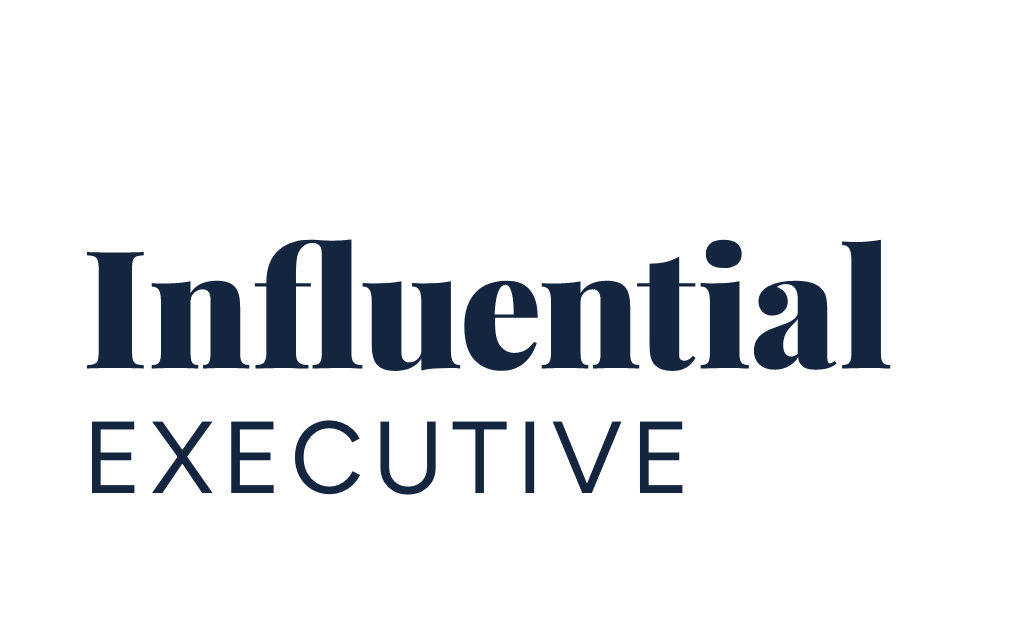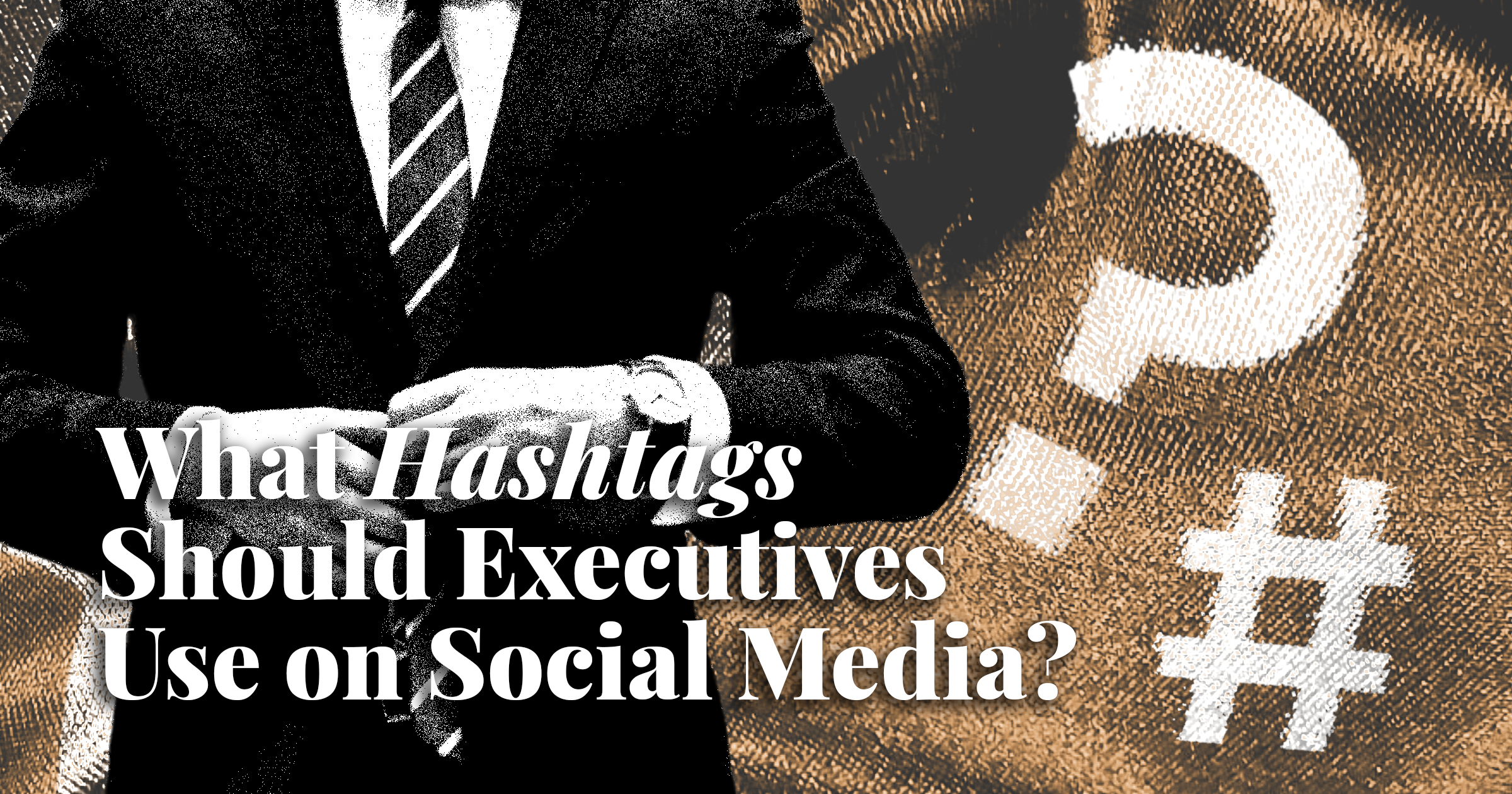Social media hashtags are a ubiquitous feature found on many apps. From Instagram to LinkedIn, it’s hard to scroll through any feed without seeing other users and brands adding hashtags to their content.
For executives with a social media account, it’s important to use hashtags both correctly and strategically. Posting consistently on social media is one aspect of a strong online presence, but making sure a CEO’s content reaches as many users as possible is another challenge.
In this article, we look at three different hashtag groups—popular hashtags, niche hashtags, and branded hashtags—and why an executive would want to use one over the other. Keep reading to the end where our marketing experts provide tips on how to optimize your social media content.
Learn about the pros and cons of three social media hashtag types
-
Popular hashtags
-
Niche hashtags
-
Branded hashtags
-
Our Expert Advice on Using Hashtags
Popular Hashtags
As its name suggests, popular hashtags are those that are used or followed by many people on a social media platform. For example, #marketing has been used in over 47 million Instagram posts.
At a glance, it may seem like only using popular hashtags in your content is a good idea. After all, they have a large audience of interested users who are actively engaging with the hashtag. However, as we’ll see with all three of our hashtag types, there are benefits and drawbacks to each group.
Pros of using popular hashtags
- Popular hashtags tap into an exceptionally large audience and can help improve content reach. For example, #business on LinkedIn has over 3.6 million followers. While this doesn’t mean all 3.6 million people will see your post, the chances of more people seeing your post is higher compared to not using that hashtag.
- They’re often easier to use in the copy itself because in many cases, the hashtag is composed of one or two commonly used words. For example, “Take a look at our #socialmedia tips!” or “Learn more about #marketing below.”
Cons of using popular hashtags
- An executive’s content may get lost among the hundreds of thousands (sometimes millions) of other posts that use the same hashtag. On a platform like Instagram, your content may be quickly pushed further down the feed if someone is looking at a popular hashtag, like #photography.
- Because many popular hashtags feature common words, they may not be specific enough to appeal to your intended audience. For example, content that uses #socialmedia can include a variety of sub-topics, such as influencers, social media platforms, social media marketing, and so on.
Niche Hashtags
The opposite of popular hashtags are niche hashtags. These generally have a much lower number of posts or followers. For example, #digitalmarketingstrategies has been used in approximately 65 thousand posts on Instagram (much lower than the 47 million posts for #marketing).
Generally, we define niche hashtags on Instagram as those with fewer than 300,000 posts. On LinkedIn, we consider a hashtag to be niche when it has fewer than 30,000 followers. For the purposes of this article, we’ll keep the definitions broader, but note that our team also looks at ultra-popular and ultra-niche hashtags when developing strategies for our executive and brand clients.
Pros of using niche hashtags
- Niche hashtags can tap into time-sensitive content. For example, #healthgoals2020 features a specific year. You wouldn’t use this hashtag after 2020 as it wouldn’t make sense. These time-sensitive hashtags will eventually lose their value but if they are used at the right moment, they can garner high engagement and reach.
- These hashtags are highly targeted to a smaller group of people. The people who are searching for posts that use niche hashtags do so because the content is often more relevant to them. Compare #digitalmarketingstrategies with #marketing. The first hashtag is much more specific—”digital” and “strategies” help distinguish the hashtag from a generic hashtag.
Cons of using niche hashtags
- Niche hashtags may be harder to use directly in your copy. Some of the more obscure or lengthier hashtags may not fit nicely into a sentence. For example, the sentence, “What are your #healthgoals2020?” doesn’t sound natural. That being said, niche hashtags can sometimes work better as a separate block of hashtags under the text. Timely hashtags may also require additional effort in terms of tracking whether or not they’re trending.
- Niche hashtags tap into an audience that is interested in a specific topic so most of your content traffic will be from this small group. These hashtags may not improve overall reach on the same scale as popular hashtags.
Branded Hashtags
Branded hashtags relate to a specific company or brand objective. These hashtags may be used during the duration of a marketing campaign or they may be used on a long-term basis.
For example, #Coke is a branded hashtag that can be used anytime, while #ShareaCoke was the company’s main hashtag during its Share a Coke campaign.
When executives post on social media, we recommend using branded hashtags strategically. Is the post itself related to the company? Is the content more general, such as a company announcement, or is it a part of a limited-time event? Avoid using branded hashtags in every single post as it can make the content feel less authentic and overly promotional.
Pros of using branded hashtags
- Branded hashtags allow users, such as employees and those interested in the brand, to interact with other company-related posts.
- Using a specific branded hashtag makes it easier for executives and marketers to pull content that uses the hashtag. If there’s a marketing campaign that calls for user-generated content, asking users to use a specific hashtag makes it easier to track this content.
Cons of using branded hashtags
- Branded hashtags, particularly new ones created for a digital marketing campaign, will have limited reach. You won’t be using these types of marketing hashtags to improve your post’s reach, but rather to help you or your marketing team track your campaign’s performance.
- Coming up with a branded hashtag may take some time. Developing a catchy hashtag that is easy for your audience to remember can be difficult. More thought must be put into creating these hashtags, especially if they’ll be connected to a wider marketing campaign. Be wary of creating hashtags that may result in an unintentional controversy.
Our Expert Advice on Using Hashtags
When developing a business-oriented social media program for CEOs and other business leaders, our team engages in a deep-dive analysis of the individual’s industry to inform us of the best possible hashtags to use. However, here are some general tips for executives who want to use hashtags in their social media content:
Research hashtags before using them by looking at the type of content that’s being posted. While a hashtag may seem harmless, other social media users may be using the hashtag with a different context in mind.
Use platform-specific hashtags where appropriate. This is most commonly done on Instagram where the phrase “Insta” is added to the hashtag. For example, in addition to using #photography, include #InstaPhotography.
Understand what hashtag information each platform is presenting to you. When you search for a hashtag on Instagram, the platform will show how many posts use that particular hashtag. Searching for hashtags on LinkedIn will show how many users follow that hashtag. This means a niche hashtag on Instagram will generally be those with lower post counts, and a niche hashtag on LinkedIn are those with lower follower counts. Click here to learn more about best practices for hashtag usage based on the social media platform.
While many executives are excited to launch their online presence to help their company reach its business goals, the most common obstacles include not understanding platform best practices (like social media hashtags) or not having enough time to create content.
That’s why our team created a guide to help executives and marketers get started.
href="#" data-color-override="false" data-hover-color-override="false" data-hover-text-color-override="#fff">Access your free social media guide here!


